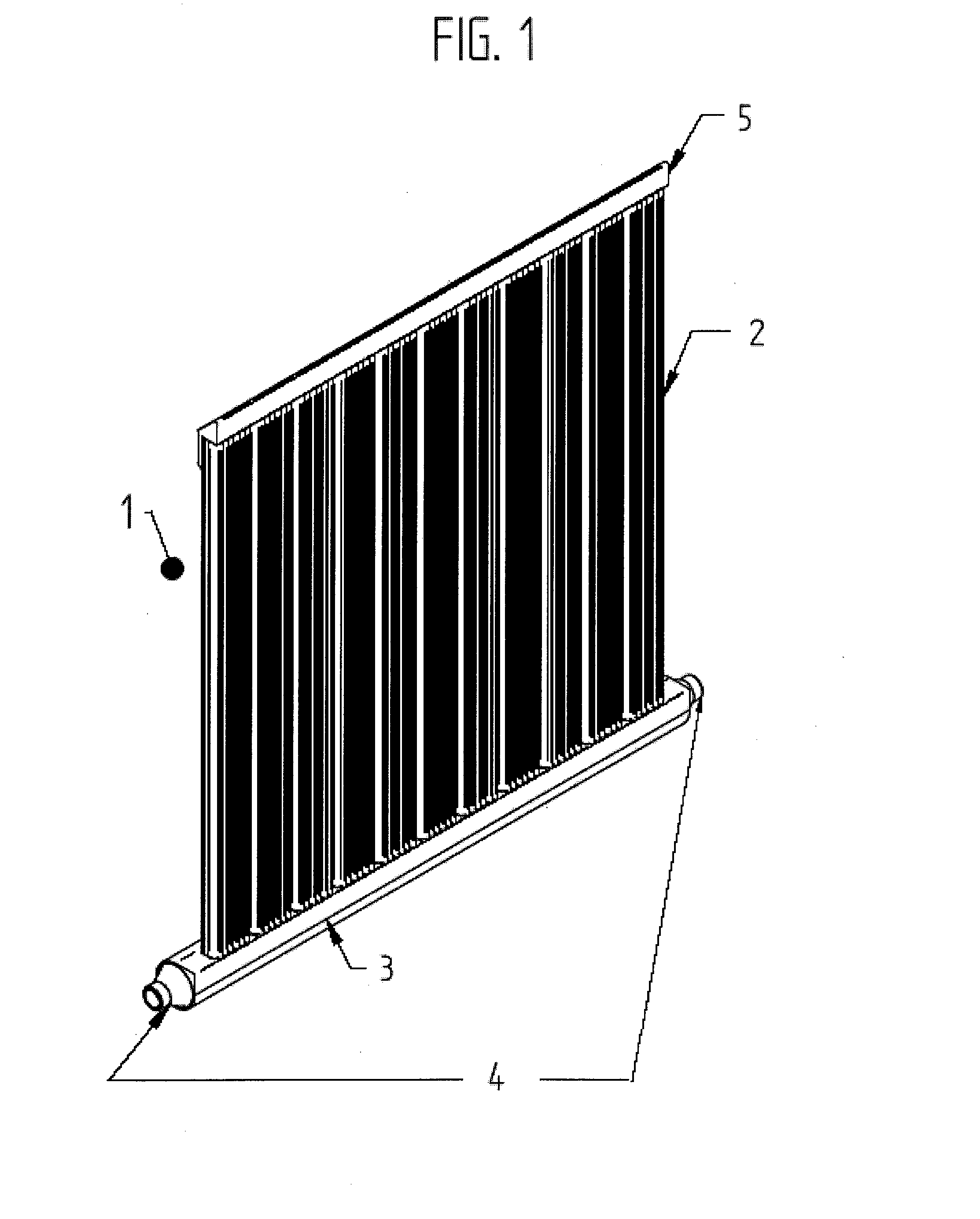Hydronic/biphasic radiator with reduced thermal inertia and low environmental impact
a biphasic radiator and thermal inertia reduction technology, applied in the field of radiators, can solve the problems of inability to prescind, the surface distribution of temperature cannot be even on a traditional-type heater, and the user's perception of poor comfort, etc., to achieve the effect of facilitating the nucleation boiling process
- Summary
- Abstract
- Description
- Claims
- Application Information
AI Technical Summary
Benefits of technology
Problems solved by technology
Method used
Image
Examples
Embodiment Construction
[0036]A hydronic biphasic thermosiphon 1 according to the invention is shown in FIG. 1, where numeral 2 indicates the vertical pipes containing the channels along the walls of which the film of moisture forms during operation, and numeral 3 indicates the collector containing the intermediate vector fluid which, during operation, in contact with heat exchanger 6 which is found within the collector, evaporating, rises up the aforementioned channels before condensing along the walls of the same (FIG. 2).
[0037]The pipe bundle-type heat exchanger, as shown in FIGS. 2 and 3 by a group of four pipes 6, is fixed to collector 3 and terminates with two sealing flanges 16, one at the inlet and the other at the outlet of the thermo-vector fluid, each of which rests on the corresponding abutment of collector 3 and is sealingly welded or brazed 14 onto the latter (FIG. 3). Each flange 16 has one or more holes (FIG. 4) for housing and sealingly fixing the pipes 6 within which the water or another ...
PUM
 Login to View More
Login to View More Abstract
Description
Claims
Application Information
 Login to View More
Login to View More - R&D
- Intellectual Property
- Life Sciences
- Materials
- Tech Scout
- Unparalleled Data Quality
- Higher Quality Content
- 60% Fewer Hallucinations
Browse by: Latest US Patents, China's latest patents, Technical Efficacy Thesaurus, Application Domain, Technology Topic, Popular Technical Reports.
© 2025 PatSnap. All rights reserved.Legal|Privacy policy|Modern Slavery Act Transparency Statement|Sitemap|About US| Contact US: help@patsnap.com



